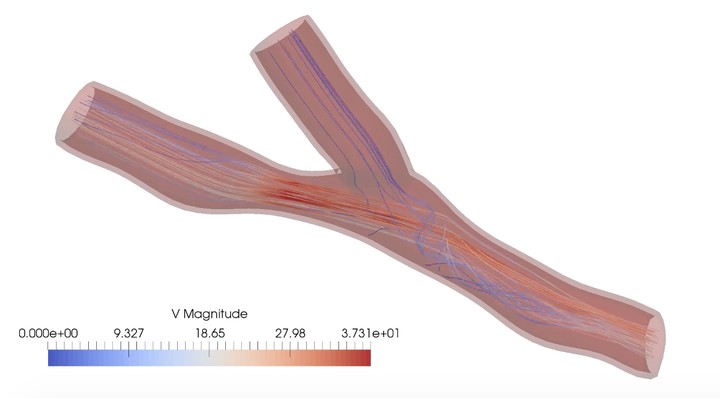Blood Flow
 Blood flow in Cephalic Arch
Blood flow in Cephalic Arch
Medical application of computational fluid dynamics has become a powerful and helpful tool in clinical practice. However, the complexity of living organisms require special mathematical approaches that provide accurate description and deal with its intrinsic variability. In this direction of research my focus is on how geometric variability affects the computational values of important haemodynamic factors. Up to now I have approached the topic from theoretical and application perspectives. Together with T. Richter (OvGU Magdeburg) we developed finite element error estimates for the approximation of elliptic problem under geometric uncertainty and showed that the uncertainty related to the domain can be a dominating factor in the finite element discretization error. Moreover, with T. Richter and L. Failer (TU Muenchen), we studied the impact of fluid-structure interactions (FSI) and its practical consequences in the blood flow simulation regime. We solve the FSI problem in Arbitrary Lagrangian Eulerian formulation and compare the solutions to that of a Navier-Stokes flow on a prestressed domain. The solver is based on a monolithic parallel Newton multigrid framework. The result shows that the compliance of the vessel has significant impact.